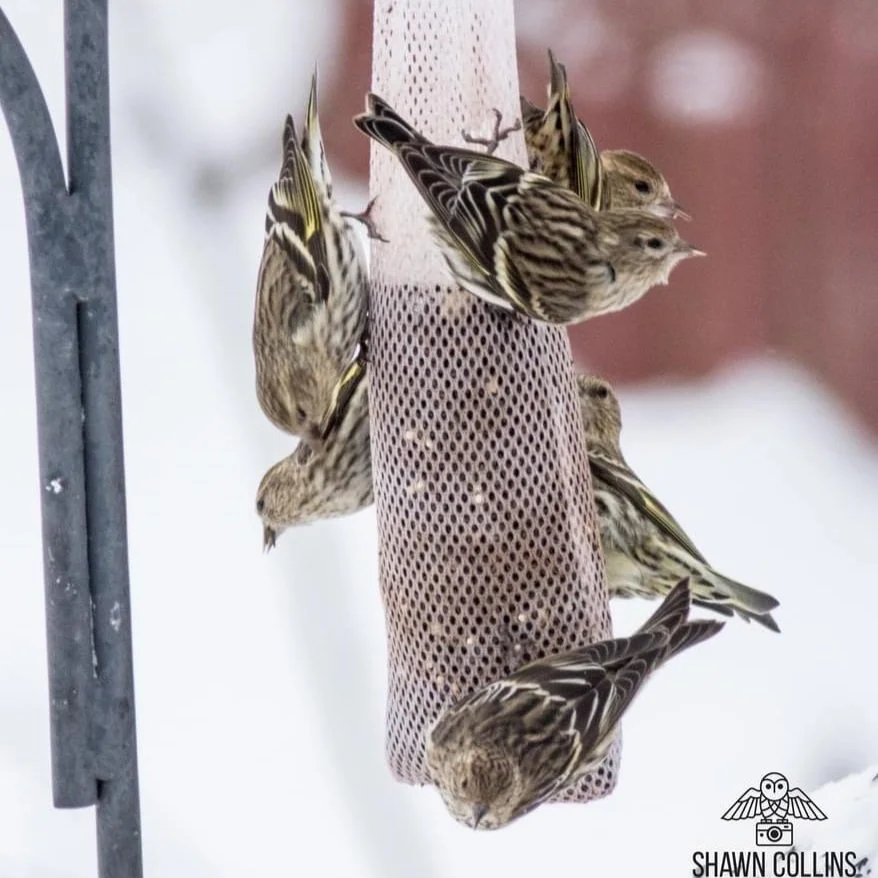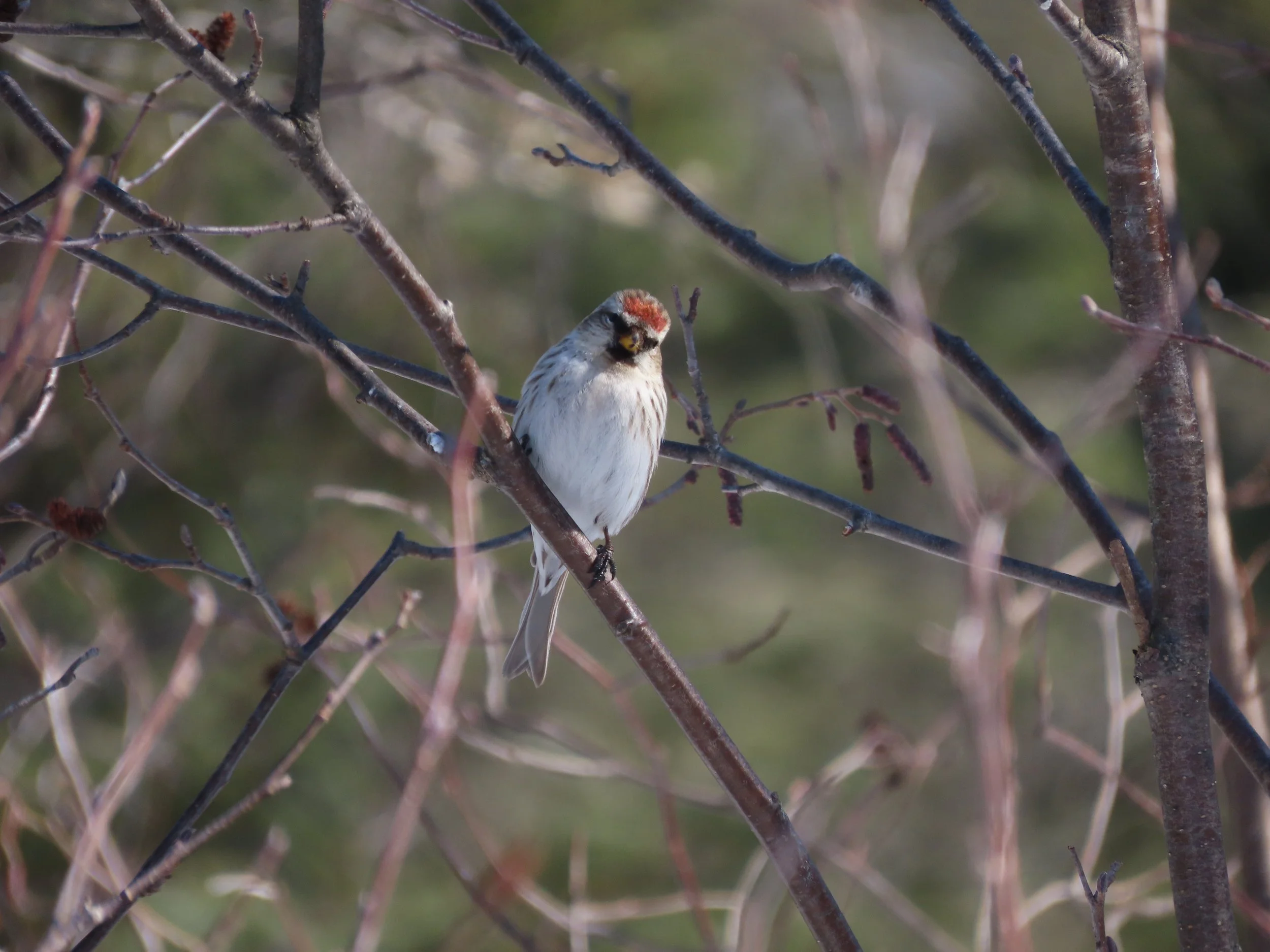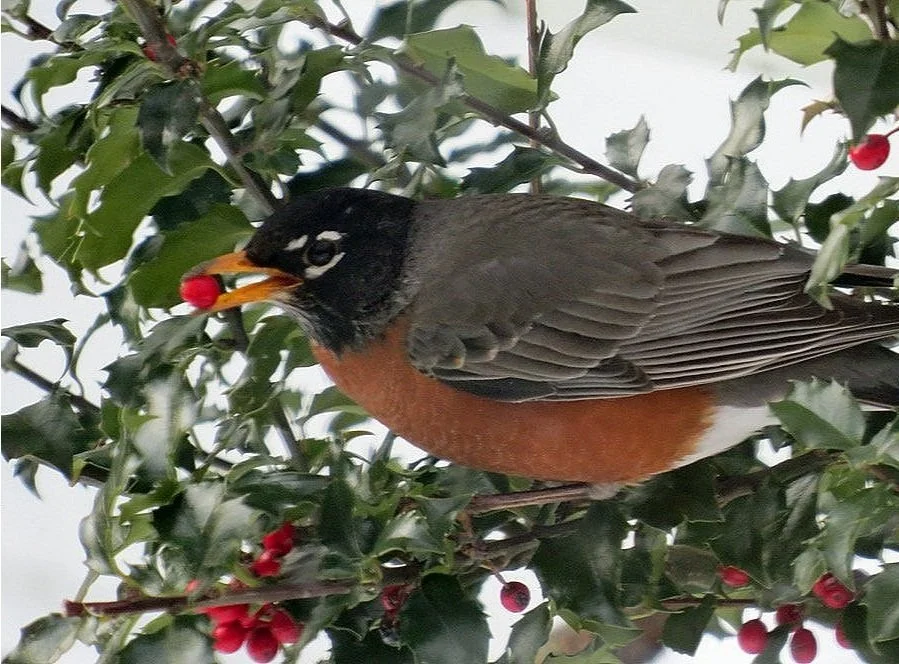DECEMBER NATURE NOTES
By Katie Andersen
The days are rapidly waning now, but there’s still plenty to be found in nature. Here are a few things happening in the natural world this month.
Winter offers the best chance to see certain raptors such as Snowy Owls, Rough-legged Hawks, and American Goshawks. Northern Shrikes, a predatory songbird, also show up in winter.
Great Horned Owls sing duets late at night this month as pairs form and strengthen their bonds in preparation for their nesting season. Males sing with deeper “hoots” while the females will be higher pitched.
Keep an eye out for irruptive songbirds from the north. While this year is not expected to be a major irruption year for most of the typical irruptive species, Pine Siskins have been on the move through the area since last month and may show up at feeders.
Other irruptive species that may show up in smaller numbers at feeders this year include Red-breasted Nuthatches, Common Redpolls, and Evening Grosbeaks. Red Crossbills have been on the move as well this winter; keep an eye on cone-laden pine trees for flocks of these unusual finches.
Sumac, bittersweet, holly, poison ivy, and other berries remain throughout the winter, providing food for many species of birds including American Robins, Eastern Bluebirds, and Cedar Waxwings.
Chipmunks and raccoons hole up for the winter, but may emerge with mild winter weather.
Eastern Monarch Butterflies have all reached their central Mexican wintering grounds by December.
Waterfowl migration peaks. Watch for migrants such as grebes, loons, scoters, mergansers, swans, and a variety of dabbling and diving ducks.
Rare gulls and terns may show up at Presque Isle.
The Winter Solstice occurs in December. The sun is at its lowest point in the sky and it is the shortest day of the year in the Northern Hemisphere.
December 2023 Dates Of Note:
Dec. 21st: Winter Solstice
Dec. 13th: New Moon; Dec. 27th: Full Moon





